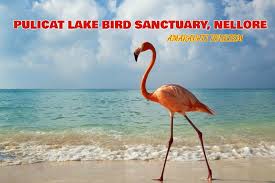Cyclone Gaja, Pulicat Lake and Pulicat Bird Sanctuary
What is the news?
- The cyclonic storm, ‘Gaja’ has turned out to be a blessing for the migratory birds, which have made it to the Pulicat lake. Thanks to the prolonged dry spell, the lake had not been attracting many winged visitors till last month, disappointing avid bird watchers.
- But the cyclone-induced rain, including in the catchment areas has brought inflows to the lake.
- As a result, the migratory birds are back in the water body, which is on the A.P. – Tamil Nadu border.
- Meanwhile, the Forest Department of Andhra Pradesh has roped in Coimbatorebased Salim Ali Centre for Ornithology and Natural History (SACON) for a detailed study to protect the brackish water ecosystem in the wake of the demands for opening the sea mouth into the Pulicat Bird Sanctuary.
About Pulicat Lake
- Pulicat Lagoon is the second largest brackish water lagoon in India, after Chilika Lake which is located in the eastern state of Odisha.
- The Lagoon is one the three important wetlands to attract North-East Monsoon rain clouds during October to December season to Tamil Nadu.
- The lake encompasses the Pulicat Lake Bird Sanctuary.
- The barrier island of Sriharikota separates the lake from the Bay of Bengal and is home to the Satish Dhawan Space Centre.
Pulicat Bird Sancturay
 Pulicat Lake Bird Sanctuary is a famous sanctuary located in Nellore district of Andhra Pradesh and Protected area in Thiruvallur District of Tamil Nadu.
Pulicat Lake Bird Sanctuary is a famous sanctuary located in Nellore district of Andhra Pradesh and Protected area in Thiruvallur District of Tamil Nadu.- The sanctuary is most noted for the many greater flamingos seen here.
- It also attracts many migratory birds and also is a feeding and nesting ground for aquatic and terrestrial birds such as pelicans, storks, etc.
- The biodiversity of this lake attracts hundreds of thousands of visitors per year.

 Pulicat Lake Bird Sanctuary is a famous sanctuary located in Nellore district of Andhra Pradesh and Protected area in Thiruvallur District of Tamil Nadu.
Pulicat Lake Bird Sanctuary is a famous sanctuary located in Nellore district of Andhra Pradesh and Protected area in Thiruvallur District of Tamil Nadu.